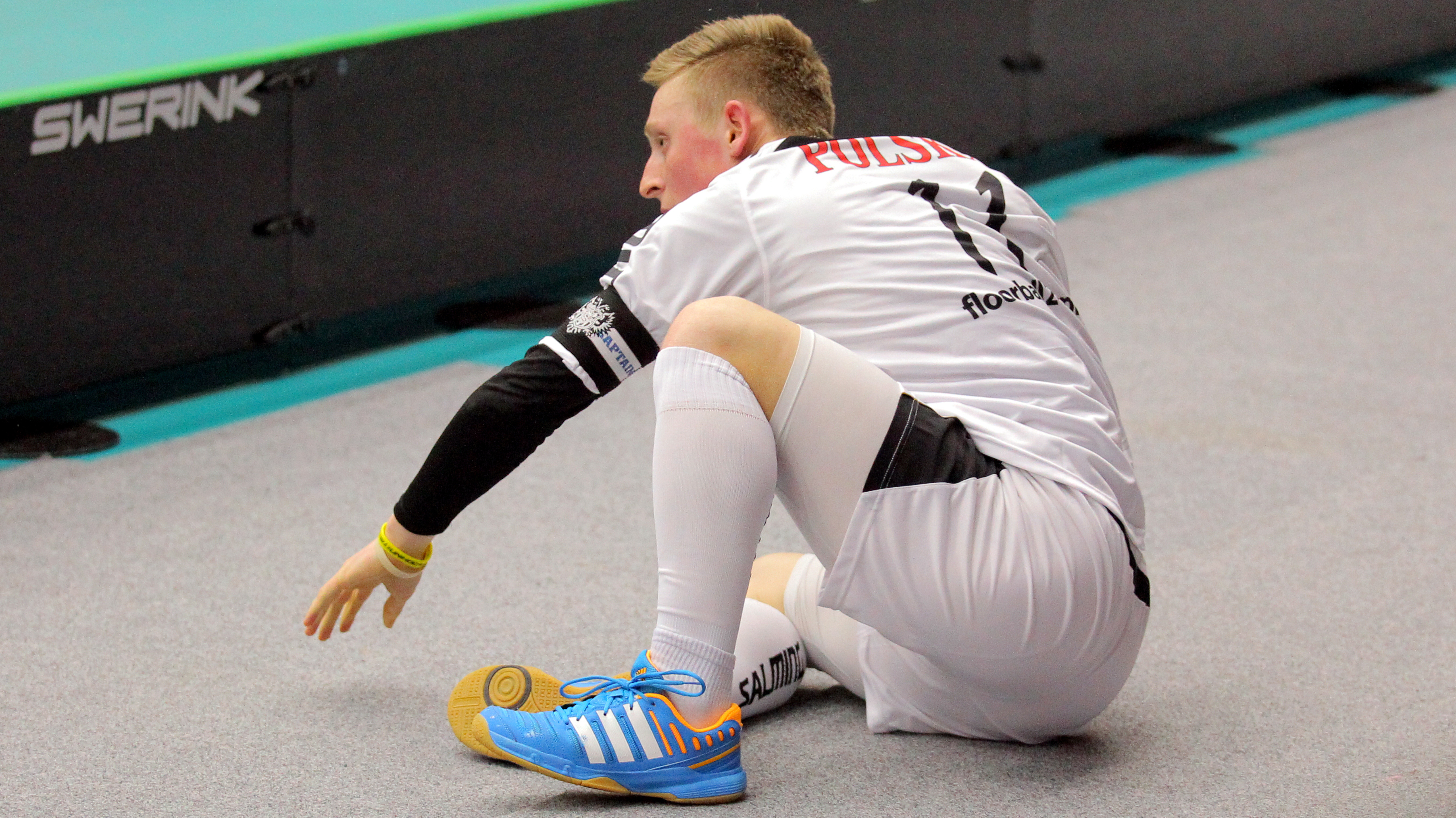First aid for injuries in floorball
Floorball is a sport with a lot of quick changes in direction and agility while hitting. Typical situations where you can suffer from an ankle sprain or twisting knee injury, or get hit by a stick or ball.

The recommended treatment for most acute injuries is referred to as the PRICE principle. This is an acronym for protection, rest, ice, compression, and elevation.
The goal of this treatment is to:
- Reduce pain and swelling
- Lay the foundation for a good rehabilitation
We recommend continuing the treatment for at least 48 hours after the time of the injury. However, some of the elements are more applicable than others.
Basic principles
PRICE is comprised of basic principles in the treatment of acute injuries, but should always be tailored to the injury type and site. Always use common sense. If a serious injury is suspected, contact emergency services.
Protection
In this context, it means to remove the athlete from play to protect against further injury. This is especially important in the first 48 hours after the injury occurred.
Rest
The athlete should not continue with any activity following the injury. A general recommendation is that the knee should be offloaded during the first 24 hours.
Ice
The aim of applying ice is to relieve pain. 20 minutes with an ice pack every other hour for a day or two has a good effect.
Even though there are many commercial ice products available, the best solution is often a plastic bag filled with crushed ice and some water. Place a damp towel between the ice pack and skin.
Compression
The most important aspect of first aid treatment for acute knee injuries is compression. This can reduce swelling. Use an elastic bandage and start wrapping it around the knee. Start from below the knee and finish slightly above it. The bandage should be as tight as possible, without stopping blood flow past the injury site. Signs that the bandage is too tight can include numbness, tingling and increased pain.
Elevation
Swelling in the knee can often be limited by keeping the knee elevated. Let the foot rest above hip level on a chair or cushion. This is particularly important in the first few hours, but it is best to continue to keep it elevated as much as possible for the first 24 hours. Remember that compression should be maintained around the clock to keep internal bleeding (swelling) to a minimum.
Sprained ankle
If you sprain your ankle, stop your activity and start PRICE treatment immediately. Apply compression as quickly as possible, in order to prevent swelling and pain. Avoid putting any weight on the ankle for the first 24 hours. Go straight to the emergency room if the foot or ankle is displaced.
Read more about treating acute ankle injuries here.
Sprained knee
If you suspect a knee injury, stop your activity and start PRICE treatment immediately, focusing on compressing the knee joint. Elevate the injured leg higher than the rest of the body. Go straight to the emergency room if there are signs of injury to the ligament or meniscus. If the right treatment is performed early enough, it is possible to examine the knee. If it swells significantly, it will be more difficult to make a diagnosis.
Read more about treating acute knee injuries here.
Blow to the thigh
A blow (contusion) to the thigh will cause pain and swelling. Start PRICE treatment immediately. Next, in order to minimise symptoms, apply compression to the thigh, keeping the hip and knee bent. This will make it easier to bend and stretch the leg during the next days. Important note: The thigh muscle should not be stretched for the first 2-3 days.
Read more about treating acute thigh injuries here.
Head injury
When in doubt, call the emergency number immediately.
A head injury must always be taken seriously. When an athlete sustains a head injury, it is important to prioritise first aid: check whether the athlete is conscious, breathing, and whether they have a pulse. At the same time, it is important to support the neck to avoid movements that can lead to paralysis if there is a fracture to the neck. The next thing to consider is whether the athlete can be moved away from the place where the injury happened. If they are conscious and experiencing neck pain, or show signs of displacement or neurological symptoms of spinal cord injuries (immobility or numbness in the arms and legs), they need to be transported on a stretcher with neck support.
If the athlete is unconscious, but breathing, then it should be assumed that there is a neck injury until proven otherwise. However, airways and ventilation should be prioritized over potential back and neck injuries. If there are signs of severe head or neck injury, seek emergency medical care. Whoever has the most medical experience on site should take charge.


